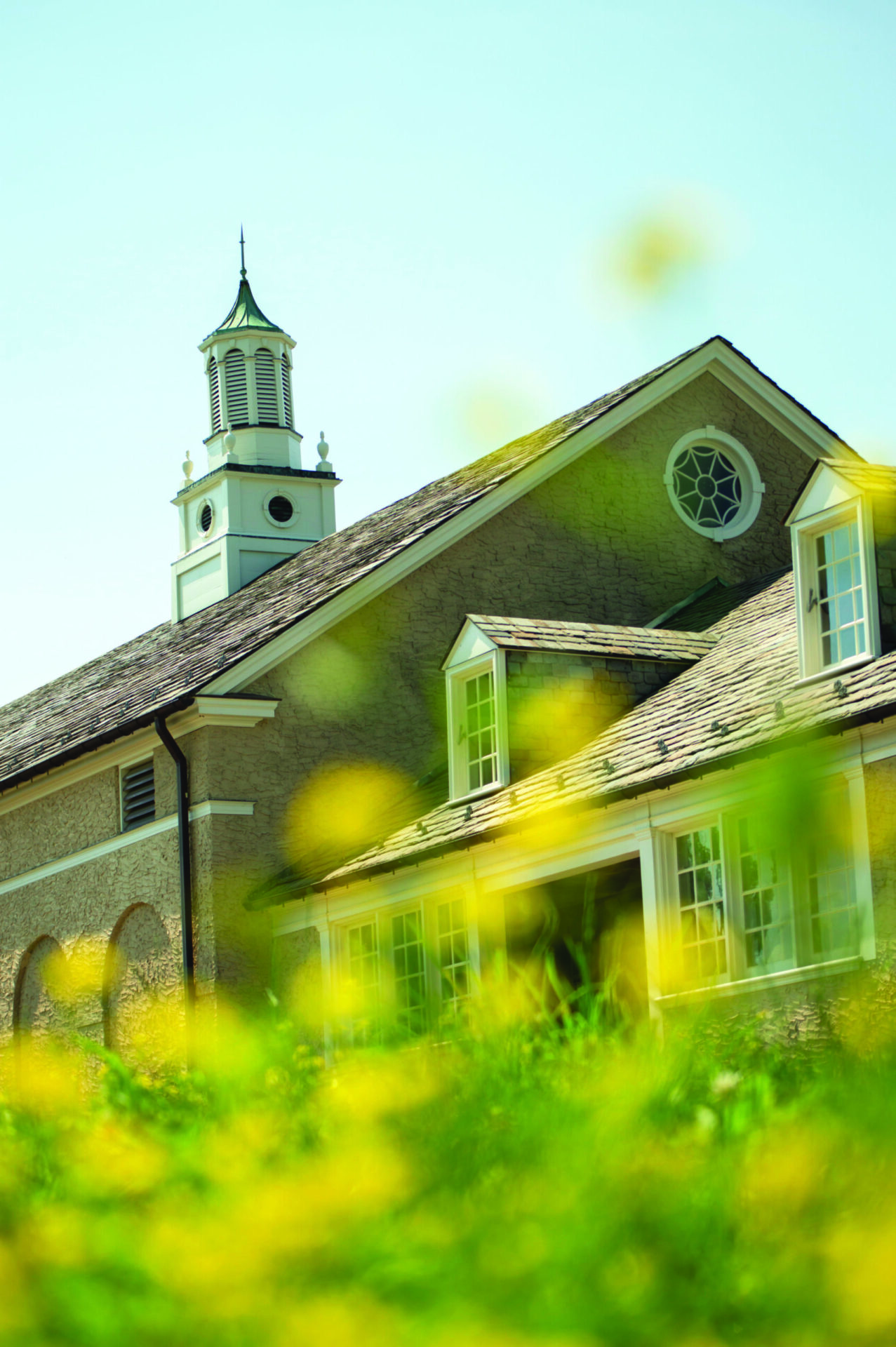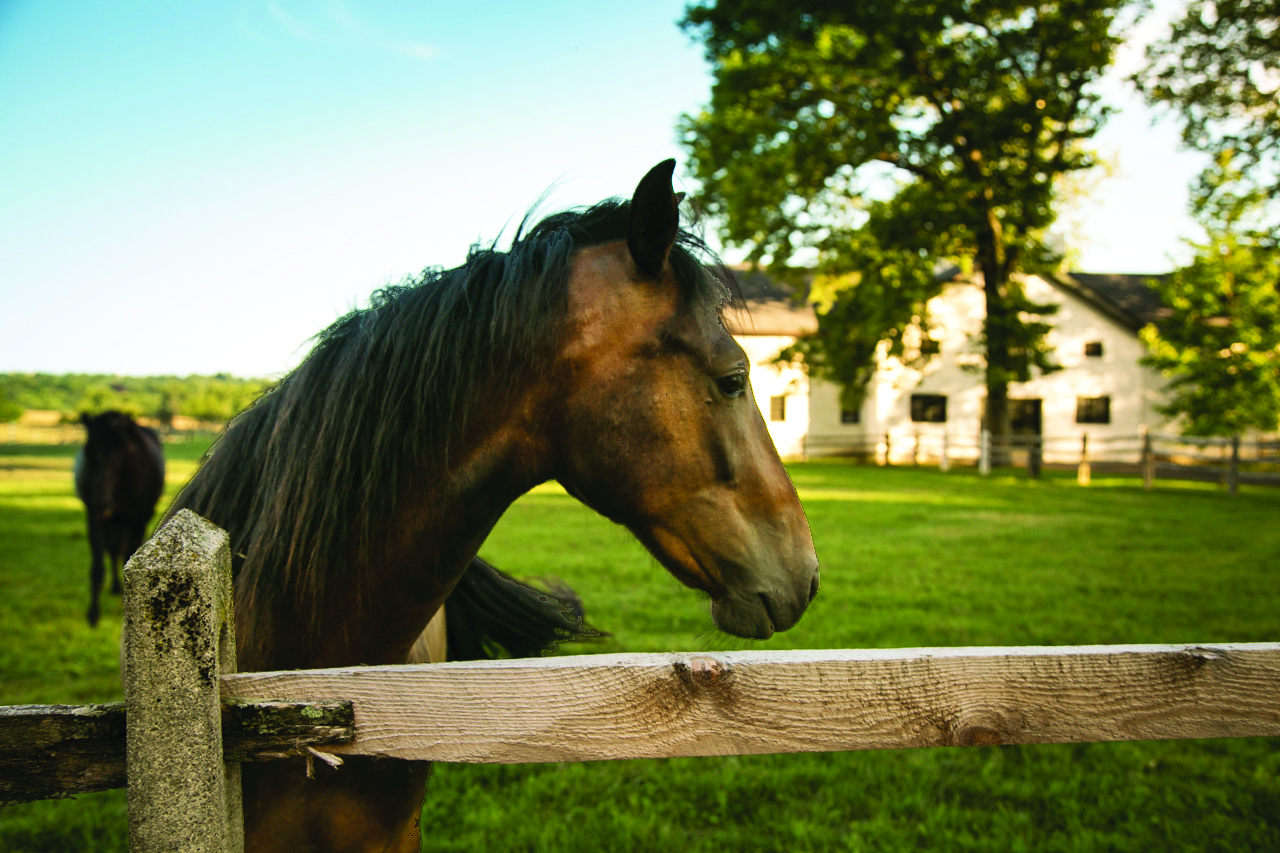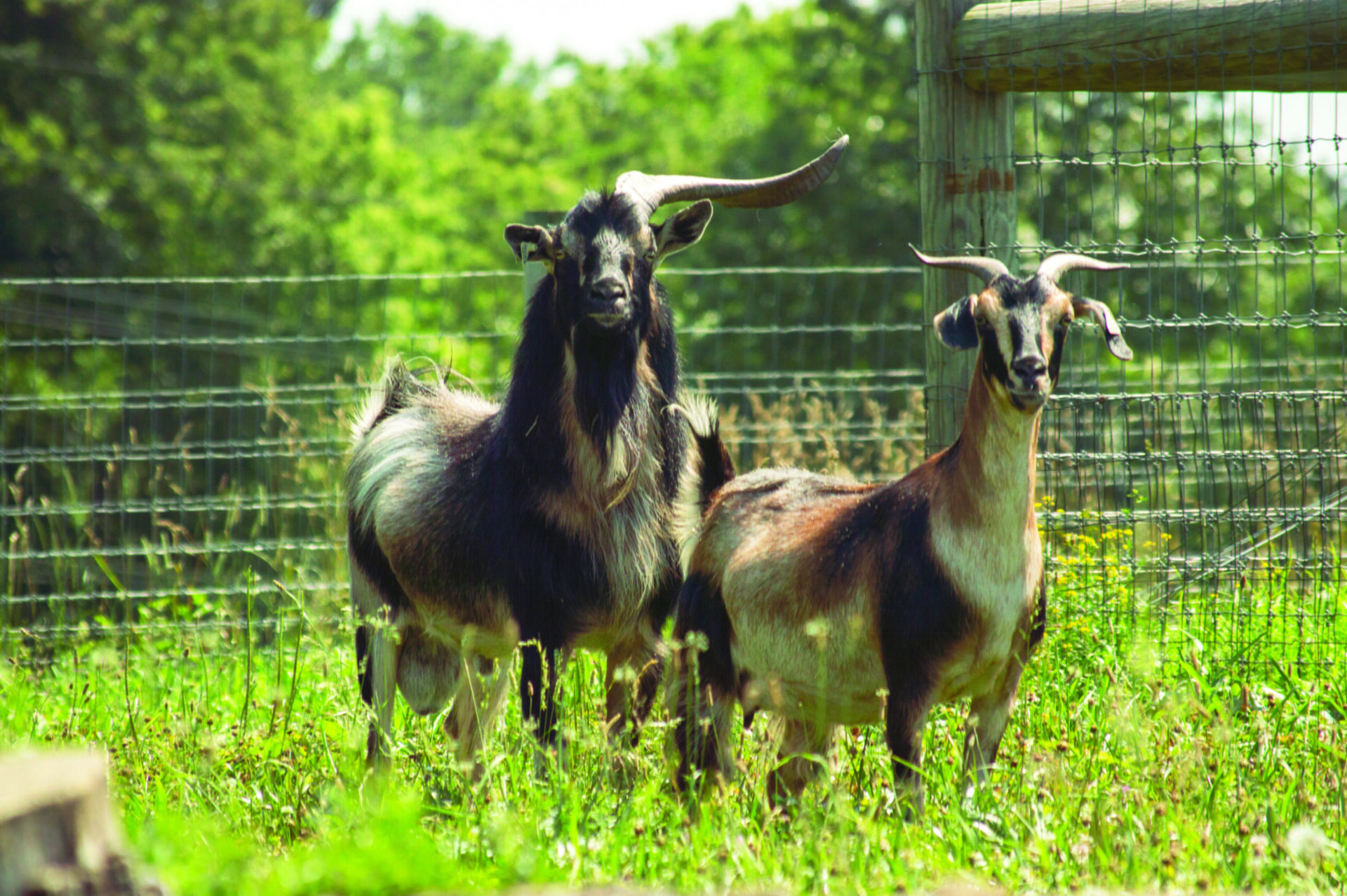New Life For One Of America’s Oldest Farms.
November 30, 2019
Aerial view of Erdenheim Farm
Just 14 miles northwest of the William Penn statue atop Philadelphia’s City Hall, where Chestnut Hill meets suburban Montgomery County, flocks of Cheviot sheep, herds of Black Angus cattle, and striking Belted Galloways graze in an expanse of lush fields. Daybreak brings the sounds of bleating sheep and the productive buzz of honeybees. This is the 475-acre Erdenheim Farm, an island of tranquility amidst one of Philadelphia’s most densely populated metropolitan pockets.
This year marks the tenth anniversary of the transaction that saved Erdenheim Farm. The complex, multi-party transaction was finalized in 2009, and was honored by the Pennsylvania legislature as a “remarkable example of the excellent work that can be accomplished through public-private partnerships.” It took the collaborative efforts of Natural Lands, Whitemarsh Township, the Whitemarsh Foundation, Montgomery County, the Pennsylvania Department of Conservation and Natural Resources, the Colonial School District, the Dixon family, and multiple private funders to ensure that 426 contiguous acres could be placed under conservation easement, securing its future as preserved open space.
Success of the effort, however, hinged on finding a family enthusiastic to take on the responsibility of owning and caring for the property. For Peter and Bonnie McCausland, the opportunity to purchase Erdenheim Farm represented the realization of a long-time dream of owning a farm and a chance to preserve the iconic property for the benefit of the community. “I read a lot of British novels as a young man and I was drawn by the romance of living on a large, open property,” said Peter McCausland. Bonnie grew up near the Appalachian Trail in Connecticut so had spent much of her youth in nature.
For the public-private consortium determined to preserve the farm, the McCauslands were an answered prayer. Not only were they interested in owning the land, they were—and remain—committed to stewarding and restoring the property’s natural, agricultural, equestrian, and architectural history. “Erdenheim has been in continuous agricultural use since the founding of the Commonwealth and my family is delighted to be part of the effort to keep it operating largely as it has been over the years,” said Peter McCausland.
a working farm, a community treasure.
Thousands experience Erdenheim Farm daily via the commuter-laden roads that run through it. “I drive out of my way just to see the cattle and sheep out in the pasture,” wrote a neighbor in a letter thanking the Farm for maintaining this natural sanctuary. Beauty is not the only benefit. “Open spaces like Erdenheim Farm provide naturally occurring flood control, air and water pollution mitigation, wildlife habitat, and carbon sequestration,” says Oliver Bass, president of Natural Lands. “But Erdenheim may be most valuable as a living tether to the region’s agricultural roots.”

Photo by Mae Axelrod
Look beyond the idyllic landscape, and you’ll find a working farm, stewarded by a small number of employees, whose diverse skills are used across the numerous agricultural, horticultural, and livestock activities. The farm’s 20 hives of honeybees produce 350 pounds of wildflower honey annually. Nearly 400 hens lay dozens of eggs daily. The orchard yields peaches, apples, apricots, plums, and pears. Vegetable beds produce heirloom tomatoes, pumpkins, and squash. Microgreens, herbs, and meat from lambs and cattle raised on the land grace the tables of many of the area’s finest restaurants. The farm’s bounty reaches suburban kitchens via the twice-weekly farm stand that is open to the public.
The McCausland family’s commitment to conservation extends to the natural landscape’s other inhabitants. The streambank of the Wissahickon Creek on the farm has been restored, including the planting of more than 600 trees, and the establishment of new meadow adjacent to the creek to encourage wildlife. When visiting Erdenheim from their home in Florida, Peter loves to spend time watching birds. Thus far, he has spotted Bobolinks, Kingfishers, a pair of Swallow-tailed Kites, Muted Swans, Cedar Waxwings, and more than 20 species of ducks. Bald Eagles have nested on the property for six years now.
Because the McCauslands appreciate and respect Erdenheim Farm’s value as a significant cultural landscape, they have dedicated themselves to restoring and preserving the property’s historical structures. These buildings continue to serve the Farm’s practical needs, including those designed by Horace Trumbauer, a nationally regarded architect of the early 20th century whose credits include the Philadelphia Museum of Art, Duke University, and the main library at Harvard University.
amplifying impact.
In 2017, the McCausland family’s desire to extend the impact of their conservation efforts led to the formation of the Erdenheim Farm Foundation, which creates opportunities for others to benefit from the what the Farm has to offer. Preservation programs for heritage breeds—such as Arapawa goats and Highland and Belted Galloway cattle—work to ensure the survival of vanishing species. Tours for school groups enrich natural science lessons with close examination of the lambing process, and plans are underway to offer a variety of continuing education classes in everything from beekeeping to orchard tending to cooking with seasonal produce.
A decade ago a remarkable piece of land was saved. In the decade since it has been loved, tended, and redeployed. In the decades to come, under generous, strategic stewardship and rooted in the McCausland family’s desire to give back, Erdenheim Farm will continue its legacy of shared bounty and community benefit.
the bob-tail nag.

Photo by Alessandra Manzotti
Aristedes Welch purchased Erdenheim Farm in 1862 and with Flora Temple, the racehorse with a snipped tail referenced in Stephen Foster’s “Camptown Races,” established world-class breeding stables that sired many prize-winning horses, including a Derby winner at Epsom and a Kentucky Derby winner. George Widener, Jr. later continued the thoroughbred tradition as did his nephew Fitz Eugene Dixon, Jr., to whom Widener had bequeathed much of the land alongside a 113-acre portion he left to Natural Lands.
That rich equine history lives on with a number of Morgan horses and the reintroduction of thoroughbreds. This year on the Equestrian Tract, the old name “Erdenheim Stud” will return, “stud” being the traditional name for a farm committed to the breeding of horses. A renovated indoor riding arena, a mile-long racing track, and acres of pasture will provide ample space for the care and training of these athletic animals.
rare, but not lost.
The Arapawa goat is the rarest goat on the planet. Now, thanks to a partnership between the Philadelphia Zoo and the Erdenheim Farm Foundation, the Arapawa’s small global population—an estimated 450 goats—is on the rise.

Photo by Mae Axelrod
Centuries ago, the “Old English” goat was a common breed in England. Colonial explorers took these aboard as a source of meat and dairy and left a flock behind on the Arapawa islands of New Zealand with the hopes of being able to return to a source of food. Though the explorers never returned, the goats multiplied and made the island home. Years passed and this breed of goat fell out of favor for domestication and eventually became extinct, everywhere except Arapawa.
Arapawa goats are classified as critically endangered by the American Livestock Conservancy. Fortunately, Erdenheim Farm has provided a safe and fertile home for Crowley (a buck), Basil, and Venus (both does). This spring, their population doubled with the successful births of Tigger and twins, Diana and Zeus. These new additions are key in the worldwide effort to save their breed from extinction.
next post
Praying Mantis Or Preying Mantis?
November 18, 2019
Our native praying mantis species Stagmomantis carolina is in decline because of their non-native cousins, the Chinese and European mantids.
